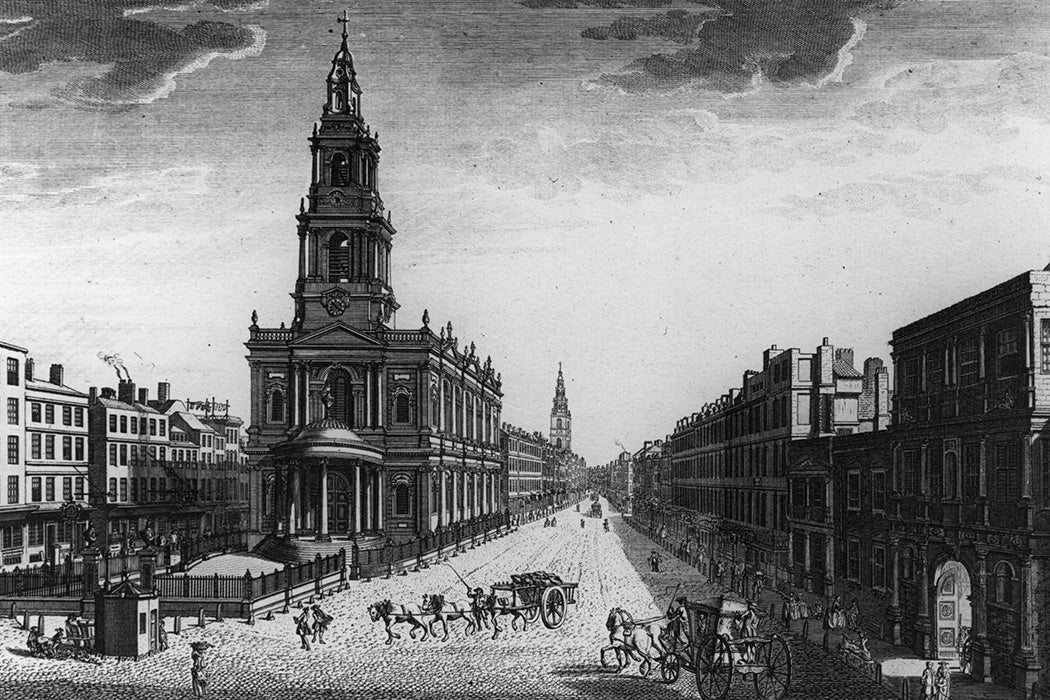In November 1772, five Inuit individuals from Nunatsiavut (Labrador) arrived in London.
Historian Coll Thrush explains what happened when explorer and entrepreneur George Cartwright brought the North American visitors to the imperial metropolis that year. Atajuq, Ikkannguq, Ikiunaq (a toddler), Tuglavingaaq, and Qavvik were “subjected to the spectacle of Georgian London and cast as one of that spectacle’s attractions.” Understood by Cartwright and other English people to be submissively overawed by the city, the Inuit instead read the urban conglomeration “according to their own cultural logics and even articulated critiques of the city.”
“From the beginning,” Thrush writes, “English voyagers to the Americas were tasked with not only finding new lands and riches but also collecting human specimens as proof of discovery, as scientific curiosities, and as potential translators.”
Underlying such specimen collection was also the idea that Native people should be taught, cultivated, and modernized by contact with imperial capitals like London. Thousands of Indigenous peoples from around the world were brought to Europe during the long colonial centuries. They were often taken by force and put on display, as if they were exotic animals or “missing links.” The first Inuit in London actually predated Atajuq and company by more than two centuries.
Unlike some, the Inuit of the 1772 visit evidently came willingly. Cartwright, whose sealing and fishing business depended on good relations with Indigenous people, believed that the Inuit “would greatly and rapidly improve by proper management and cultivation.” And that meant seeing London.
Yet much was made of his visitors not being suitably impressed by the likes of London Bridge and St. Paul’s Cathedral. They construed the first as a natural bridge and the second not unlike the mountains of home. They were, however, overwhelmed by the ceaseless staring of the natives, and the crowdedness of it all. After a long day of touring, Atajuq complained to Cartwright (in Cartwright’s rendition): “Oh! I am tired; here are too many houses; too much smoke; too many people.”
Thrush makes the point that London has long been considered wearying, unreadable, and unfathomable—and quotes Giacomo Casanova, Daniel Defoe, Tobias Smollett, and William Cowper as examples of other visitors or natives voicing virtually the same complaints as Atajuq.
“Instead of the facile tautology of the primitive unable to understand London, it would appear that almost no one was able to apprehend the city,” Thrush points out. “For many observers, London eluded reason and comprehension and moved into the uncanny, irrational, and even otherworldly.”
Tragically, for many Indigenous people removed to the Europe, it was a one-way trip. Old World diseases took a fearsome toll. Cartwright was readying to return the Inuit back to Labrador in spring 1773 when smallpox killed four of them. All had been eager to go home again. Three of the adults, Atajuq, Ikkannguq, and Tuglavingaaq, were cremated, their ashes buried with the body of the child, Ikiunaq, in the dunes outside Plymouth in southwest England.
Weekly Newsletter
Only Qavvik survived, but she may have inadvertently carried the disease with her when Cartwright returned her to Labrador. In winter 1773, smallpox swept through the southern regions of Labrador, devastating the communities there.
In 1774, undeterred by his previous disaster, Cartwright found a new recruit to take back to England. The young boy was promptly inoculated against smallpox in London but nonetheless died three days later. “Cartwright lamented the loss of an interpreter, servant, and public relations asset who would have enhanced his business dealings in both London and Labrador.”
Thrush has expanded his scholarship on five centuries of cross-cultural entanglements of strangers in a a strange city in Indigenous London: Native Travelers at the Heart of Empire (2016).







